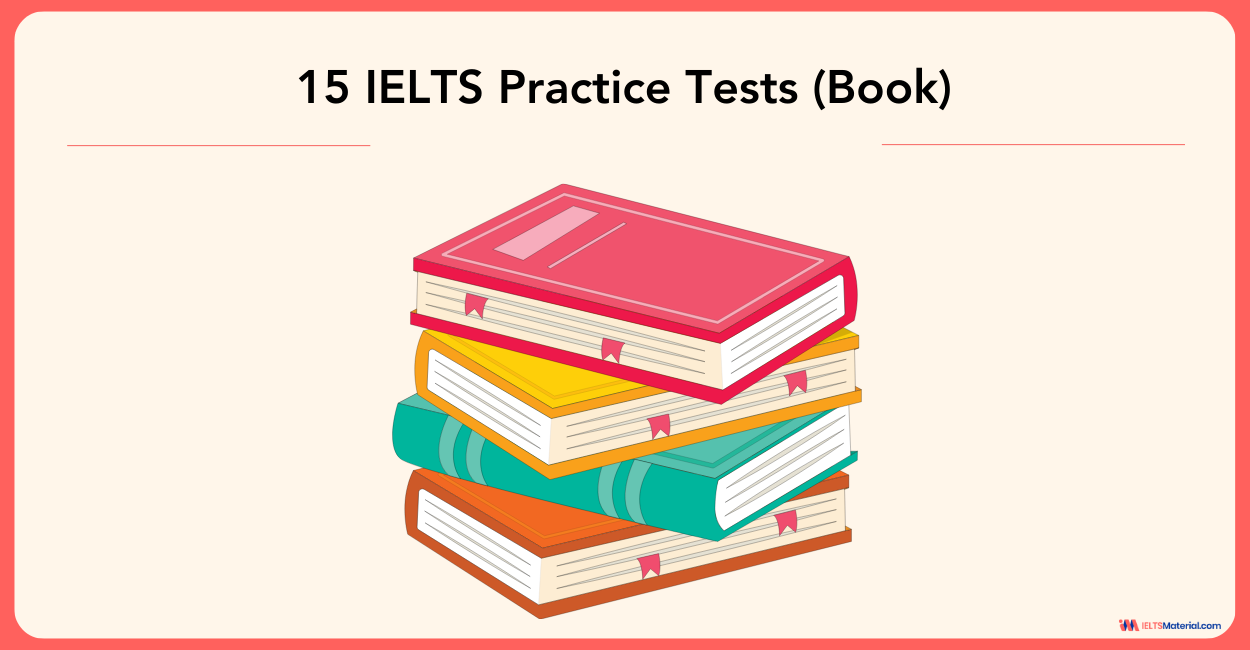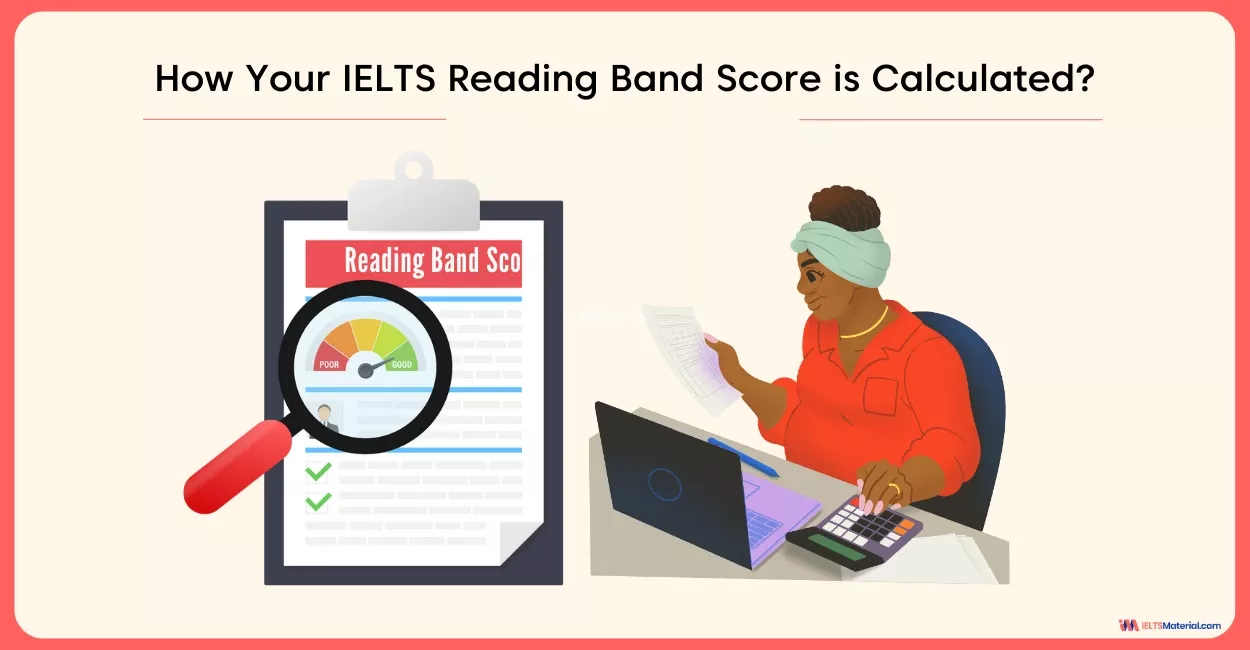Dress Regulations at Work and How to Achieve a Better Work-life Balance - IELTS Reading Answers
12 min read
Updated On
-
Copy link
Sharpen your reading skills with IELTS General topics like 'Dress Regulations at Work' and 'How to Achieve a Better Work-life Balance', and use the detailed answer explanations and tips to improve your reading band score and comprehension abilities.
Table of Contents
- Question Types for the Reading Passages - Dress Regulations at Work and How to Achieve a Better Work-life Balance
- Passages for Dress Regulations at Work and How to Achieve a Better Work-life Balance Reading Answers
- Reading Passage 1
- Reading Passage 2
- Answers For ‘Dress Regulations at Work’ and ‘How to Achieve a Better Work-life Balance’ IELTS Reading Passages With Location and Explanation
- Tips for Answering the Question Types in the ‘Dress Regulations at Work’ and ‘How to Achieve a Better Work-life Balance’ IELTS Reading Passages

Limited-Time Offer : Access a FREE 10-Day IELTS Study Plan!
To effectively tackle and answer diverse question types of the IELTS General Reading, try taking up reading passages like the ‘Dress Regulations at Work’ and ‘How to Achieve a Better Work-life Balance’ from the Cambridge 14 IELTS General Reading Test 2!
Ideally, you should not spend more than 20 minutes on a passage. Let’s see how easy these passages are for you and if you can make it in 20 minutes. If not, try more IELTS General Reading practice tests.
Question Types for the Reading Passages - Dress Regulations at Work and How to Achieve a Better Work-life Balance
There are 13 questions in total in the reading passages, ‘Dress Regulations at Work’ and ‘How to Achieve a Better Work-life Balance.’ You must understand the subject, look up key terms in the IELTS General Reading passages, and then respond in line with the instructions.
The question types found in the ‘Dress Regulations at Work’ and ‘How to Achieve a Better Work-life Balance’ passages are:
- IELTS Reading Sentence Completion (Q. 1-6)
- IELTS Reading Note Completion (Q. 7-13)
Before you move on to solving the questions for the passages, make sure you take a look at the video below to avoid making the three common mistakes that candidates make in IELTS Reading!
Passages for Dress Regulations at Work and How to Achieve a Better Work-life Balance Reading Answers
Given below are the ‘Dress Regulations at Work’ and ‘How to Achieve a Better Work-life Balance’ IELTS Reading passages. Read them to solve the questions and find out how to get more correct answers to achieve a high IELTS band score.
Reading Passage 1
Read the text below and answer Questions 1-6
Dress Regulations at Work
Your contract may state that you need to dress in a certain manner or wear a uniform. Your contract might also state that you need to dress ‘smartly’, rather than specifying any particular garments. As you might well have conflicting ideas of what counts as smart’, you should ask your employer for clarification. Many employers that have a strict dress code choose to provide clothing or a discount on clothing. However, this is not necessarily compulsory for the employer and is a factor you need to consider when taking a job.
Protective clothing and equipment
Your employer can tell you to put on protective clothing and equipment (such as gloves, a visor, boots, etc.). If you don’t, your employer is entitled to take disciplinary action, which can include excluding you from the workplace.
You are required to:
- Co-operate with your employer on health and safety
- Correctly use work items provided by your employer, including protective equipment, in accordance with instructions
- Not interfere with or misuse anything provided for your health and safety or welfare.
Of course, any protective gear has to fit and be appropriate for the situation. It shouldn’t cause you pain. If it does, you should negotiate alternative equipment or arrangements. Don’t be put off. Sometimes employers can, out of caution, interpret health and safety rules unnecessarily rigidly. And of course, you shouldn’t be required to pay for any protective equipment or clothing that you need. However, if your employer buys the gear, they are entitled to keep it when you leave.
The obligation to maintain protective clothing lies with the employer. The employer is also required to provide an appropriate storage space to keep the protective equipment in when it is not being used. And finally, the employer must provide the equipment and service free of charge to the employee.
Jewellery
Banning employees from wearing jewellery and loose clothing may be justified to prevent a potential hygiene hazard if you work in areas of food production or areas which need to be kept sterile.
Likewise, your employer can judge that loose jewellery may constitute a snagging hazard if you operate machinery. If you think restrictions are not justified by health and safety concerns, talk to your workplace union rep if you have one, as they may know of solutions to the problem which other employees have used before.
Book IELTS online classes to crack IELTS reading passages in 1 Go!
Questions 1-6
Choose ONE WORD ONLY from the text for each answer.
Write your answers in boxes 1-6 on your answer sheet.
1 If employees are unsure what their company wishes them to wear for work, they should request …………….
2 Some companies offer their employees a ……………. when they buy items to wear for work.
3 Employees who fail to wear protective clothing when required could be subject to ……………. procedures.
4 Employees ought not to be in ……………. because of protective clothing or equipment.
5 It is the company’s responsibility to ensure that there is a suitable place for the ……………. of protective equipment.
6 Employees who work with certain types of ……………. may have to remove jewellery to avoid potential injuries.
Reading Passage 2
How to Achieve a Better Work-life Balance
As more and more employees work from home full time and everyone has 24/7 access to email, balancing work and family may not seem like an easily attainable goal. So how can you juggle the demands of both worlds? Below are some tips to help you get started.
It’s easy to get sucked into habits that make us less efficient without realizing it – like keeping your social media page open at work so you don’t miss something ‘important’. Draw up a list with all the activities that don’t enhance your life or career. Then minimize the time you spend on them.
It’s hard to say no’, especially to a supervisor or loved one, but sometimes that powerful little word is essential. Learn to use ‘no’ judiciously and it will become a powerful tool in balancing work and family.
Research shows that exercise helps you remain alert. Finding time to hit the gym may be hard, but it will ultimately help you get more things done because exercise really boosts energy and improves your ability to concentrate.
Study after study shows that significant sleep deprivation affects your health and well-being. Exposure to electronics can significantly negatively impact your sleep, so try to unplug an hour before you go to sleep.
What would you do if you had a whole day to yourself with no demands on your time? While most people don’t have the luxury of a whole day dedicated to relaxation, constantly putting off that downtime and putting everyone’s needs before yours will wear you down. Pick a time to do something just for you. Even just a few minutes of ‘me time’ a day will help to recharge your batteries.
Don’t assume your family and manager are aware of your concerns. If you feel you have to adjust your schedule to discover a better work-life balance, then voice that requirement. If that means asking your boss for permission to leave a few minutes early once a week so you can hit that yoga class on the way home, do it.
All new habits require time to build, so if you find yourself sneaking your smartphone to bed, that’s okay. Leave your phone downstairs tomorrow night. Tiny steps are the key to finding that balance, so start small, and go from there. Most of all, know your limitations and what works best for you; then decide what really matters, what advice you want to follow, and prioritize.
Questions 7-13
Choose ONE WORD ONLY from the text for each answer.
Write your answers in Boxes 7-13 on your answer sheet.
Achieving a better work-life balance
How to begin
Make a complete 7 ……………. of things that are not helpful and reduce involvement in them
Refuse some requests as this can be a useful 8 ……………. in gaining a better work-life balance
Things that cars help
Regular exercise
– can increase 9 ……………. significantly
Sleep
– insufficient sleep can make people ill
– avoid focusing on 10 ……………. in the lead-up to bedtime
Issues that require attention
Those who see other people’s 11 ……………. as more important than their own will suffer
If the working day is too long, get 12 ……………. to shorten it occasionally
People should learn to recognise their own 13 …………….
Want to practice with exclusive IELTS General Reading materials and experts?
Answers For ‘Dress Regulations at Work’ and ‘How to Achieve a Better Work-life Balance’ IELTS Reading Passages With Location and Explanation
Check out the answer key with the explanations and location of the IELTS General Training passages, ‘Dress Regulations at Work’ and ‘How to Achieve a Better Work-life Balance’ given below and find out the reasons behind each answer.
1 Answer: Clarification
Question type: Sentence Completion
Answer Location: “As you might well have conflicting ideas of what counts as smart’, you should ask your employer for clarification” – Line 4
Answer explanation: If employees are unsure about what their company expects them to wear for work, they should ask their employer for clarification. Hence the answer is clarification.
2 Answer: Discount
Question type: Sentence Completion
Answer Location: “Many employers that have a strict dress code choose to provide clothing or a discount on clothing.” – Line 5
Answer explanation: Some companies provide clothing or a discount on clothing for their employees who need to adhere to a strict dress code. Hence, the answer is the discount.
3 Answer: Disciplinary
Question type: Sentence Completion
Answer Location: “If you don’t, your employer is entitled to take disciplinary action, which can include excluding you from the workplace.” – Line 9
Answer explanation: It’s mentioned that if employees fail to wear protective clothing when required, their employer is entitled to take disciplinary action against them. Hence, the answer is disciplinary.
4 Answer: Pain
Question type: Sentence Completion
Answer Location: “It shouldn’t cause you pain.” – Line 15
Answer explanation: The mentioned line advises that protective gear shouldn’t cause the employee pain, indicating that discomfort or pain due to protective clothing or equipment should be avoided. Hence, the answer is pain.
5 Answer: Storage
Question type: Sentence Completion
Answer Location: “The employer is also required to provide an appropriate storage space to keep the protective equipment in when it is not being used.” – Line 18
Answer explanation: The employer is required to provide an appropriate storage space for keeping protective equipment when it’s not in use. Hence the answer is storage.
6 Answer: Machinery
Question type: Sentence Completion
Answer Location: “Loose jewellery may constitute a snagging hazard if you operate machinery.” – Line 28
Answer explanation: Loose jewellery may constitute a snagging hazard, especially for employees who operate machinery, according to the line. Hence the answer is machinery.
7 Answer: List
Question type: Note Completion
Answer Location: “Draw up a list with all the activities that don’t enhance your life or career.” – Line 4
Answer explanation: Make a complete list of things that are not helpful and reduce involvement in them as mentioned in the line. Hence the answer is 26 weeks.
8 Answer: Tool
Question type: Note Completion
Answer Location: “Learn to use ‘no’ judiciously and it will become a powerful tool in balancing work and family.” – Line 9
Answer explanation: Refusing some requests can be a useful tool in gaining a better work-life balance, according to the line. Hence the answer to this question is tool.
9 Answer: Energy
Question type: Note Completion
Answer Location: “exercise really boosts energy and improves your ability to concentrate.” Line 13
Answer explanation: Regular exercise can increase energy significantly, as stated in the line. Hence the answer is energy.
10 Answer: Electronics
Question type: Note Completion
Answer Location: “Exposure to electronics can significantly negatively impact your sleep.” – Line 17
Answer explanation: It’s advised to avoid focusing on electronics in the lead-up to bedtime to improve sleep quality. Hence, the answer is electronics.
11 Answer: Needs
Question type: Note Completion
Answer Location: “putting everyone’s needs before yours will wear you down.” – Line 21
Answer explanation: Those who see other people’s needs as more important than their own will suffer, according to the line. Hence the answer is needs.
12 Answer: Permission
Question type: Note Completion
Answer Location: “If that means asking your boss for permission to leave a few minutes early…” – Line 25
Answer explanation: If the working day is too long, one can ask for permission to shorten it occasionally, as suggested. Hence, the answer is Permission.
13 Answer: Limitations
Question type: Note Completion
Answer Location: “know your limitations and what works best for you; then decide what really matters…” – Line 31
Answer explanation: People should recognize their own limitations, according to the line, which is essential for achieving a better work-life balance. Hence, the answer is limitations.
Tips for Answering the Question Types in the ‘Dress Regulations at Work’ and ‘How to Achieve a Better Work-life Balance’ IELTS Reading Passages
Let’s dive into some effective IELTS exam preparation tips for band score of 8+ and for tackling common IELTS Reading question types, using the passages ‘Dress Regulations at Work’ and ‘How to Achieve a Better Work-life Balance’ as a reference.
Sentence Completion
Sentence Completion questions require you to fill in the correct word or phrase from the passage into a sentence with a gap. Here are some steps on how to approach them:
- Understand the sentence: Read the sentence carefully to get a clear sense of its meaning and determine the type of word that is missing (noun, verb, adjective, etc.).
- Scan for keywords: Identify and underline keywords in the question to help locate the relevant section in the passage.
- Match meaning and grammar: Once you have found the potential answer, read the full sentence with the inserted word or phrase to ensure it fits both grammatically and logically.
- Always double-check: Always reread the sentence with your answer to confirm that it makes sense within the context of the passage.
Note Completion
Note Completion questions ask you to complete a set of notes or outlines using information directly from the reading text. Here is a strategy to make it easier:
- Read the instructions and title first: This helps you understand the context of the notes.
- Focus on keywords: Go through each sentence in the notes, underline the keywords, and use them to locate the correct section in the passage.
- Predict before you search: Try to guess the type of word (e.g., date, name, reason) that will fit in the gap before checking the passage.
- Verify your answer: Ensure your chosen word or phrase is a direct match from the passage and fits grammatically within the note.
To sum up, strengthen your performance in IELTS Reading and improve your accuracy in Sentence and Note Completion tasks by consistently practising with authentic reading passages from IELTS recent actual tests. It will help you get familiar with various formats and boost your confidence for test day.
Useful Links:
Practice IELTS Reading based on question types

Start Preparing for IELTS: Get Your 10-Day Study Plan Today!
Explore other Reading Articles


Kasturika Samanta

Haniya Yashfeen

Kasturika Samanta
Recent Articles

Nehasri Ravishenbagam

Haniya Yashfeen

Haniya Yashfeen

Haniya Yashfeen




Post your Comments